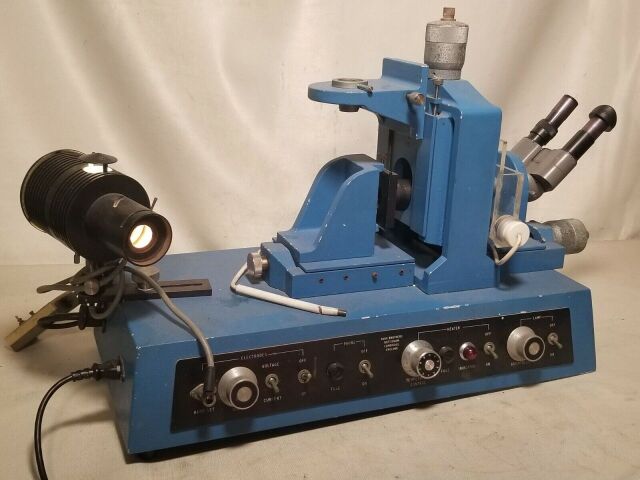
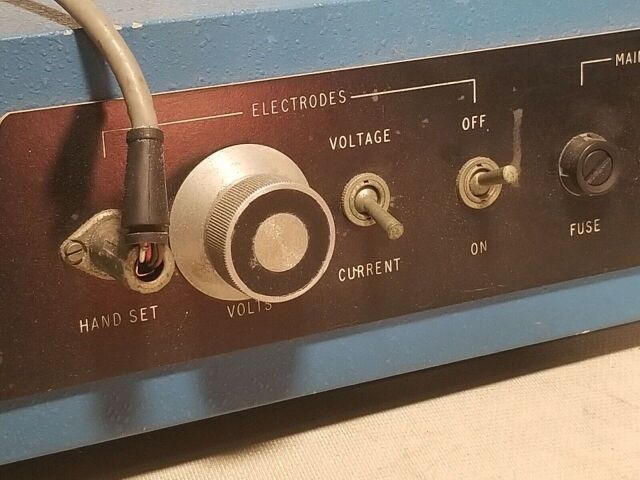
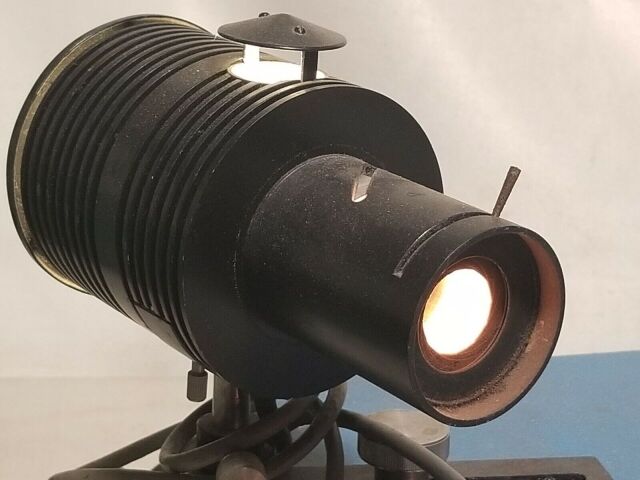
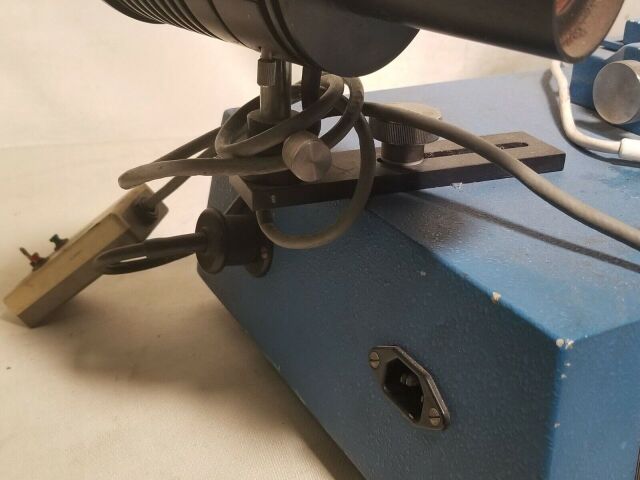
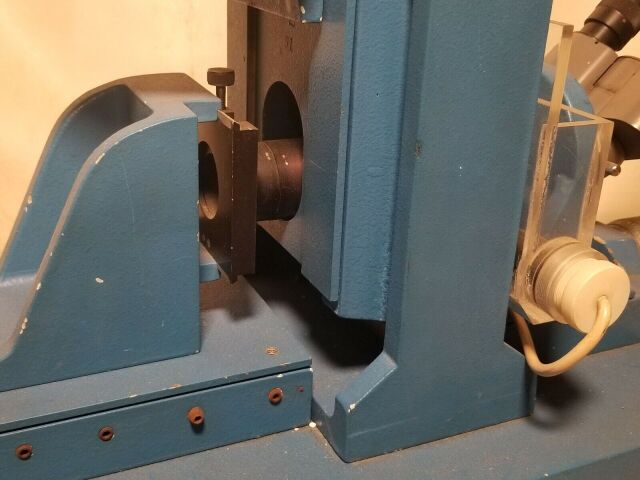
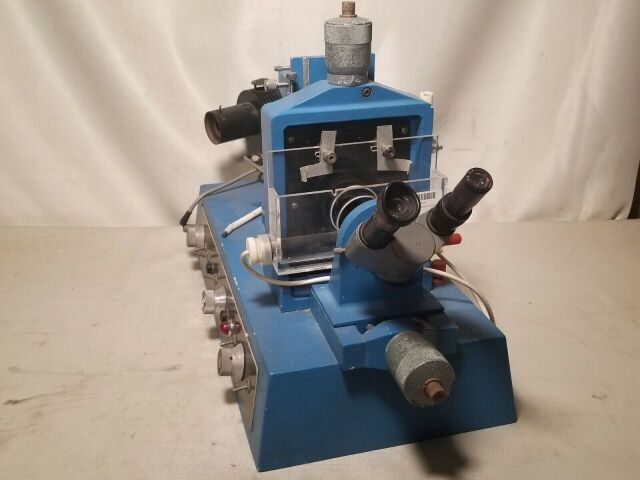

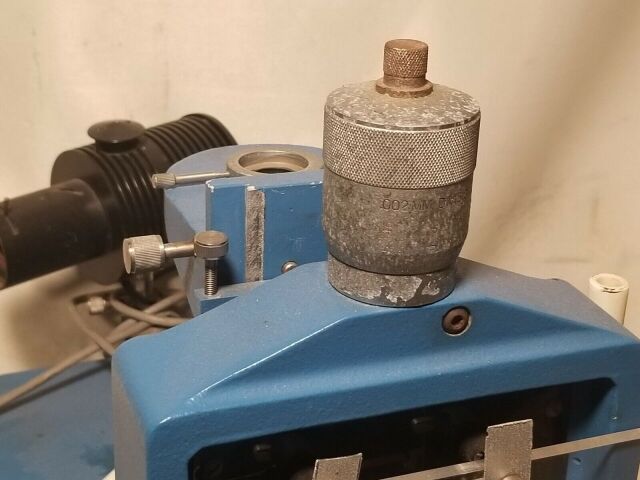

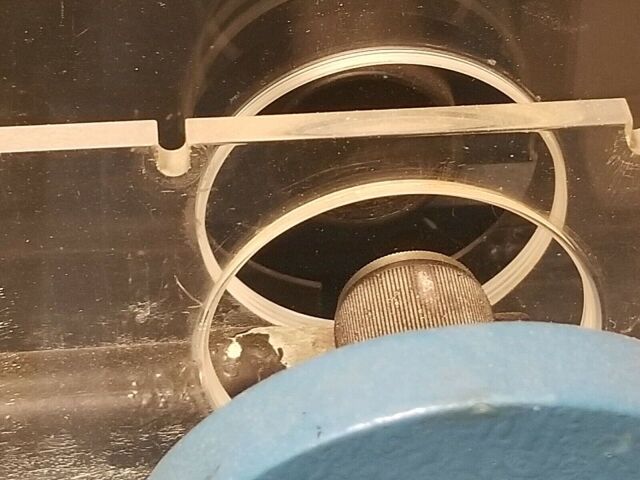


 Get a CPS 2-Year Protection Plan starting at $5.99. Sold separately. Learn more
Get a CPS 2-Year Protection Plan starting at $5.99. Sold separately. Learn more
Seller assumes all responsibility for this listing..
Listing: #4715935
The Microelectrophoresis Apparatus Mk II can be used whenever the particles can be made visible relative to the suspending medium. Such visibility depends (apart from the intensity of the illumination and efficiency of the viewing optics) on the size of the particles and on the ratio of the particle refractive index to that of the surrounding medium. Using the quartz-iodine illumination unit of the standard instrument, aqueous dispersion of polystyrene particles (which have a rather unfavourable refractive ratio, about 1.1), shown to be visible down to a diameter of about 0.2 m. Particles with a more favourable refractive index ratio, e.g. carbon particles, can be seen down to much smaller sizes but it is difficult to give any precise limit in cases where monodisperse suspensions cannot be separated.
Lower Limit of Particle SizeOne effective means of lowering the limit of particle visibility is use of a laser illuminator. Even a 3 mW He:Ne continuous laser can concentrate more illumination into the observed volume than the 100 watt conventional illuminator and polystyrene particles of diameter only 0.09 m become visible. It must be remembered however that the necessary illumination power goes up very sharply as the size of the particle decreases below the figures quoted. Rank Brothers are pleased to perform free trials of particle visibility on samples sent to us by prospective purchasers of the apparatus.
The cylindrical cell, with extremely thin walls and ultra microscope illumination, is especially suitable when very small particles are involved.
Upper Limit of Particle SizeThere is obviously no upper limit of particle size so far as visibility is concerned, the effective limit being set by the rate of gravitational fall or rise in the dispersion medium concerned. The flat cell is especially useful here because sedimenting particles fall neither out of view nor out of the stationary level. Moreover provided the rectangular cross section of the flat cell has its major dimension vertical, the sediment collects on an electro-osmotically unimportant surface so that measurements at the stationary level remain valid. The vertical gravitational component of the particles' motion can quite properly be ignored while the horizontal electrophoretic component is measured. Since the field of view is about 500 m across it follows that if times of vertical transit in excess of 20 seconds are accepted, the upper useful limit of particle diameter in aqueous solution at 25C with particle specific gravity 2.0, is about 20 m. Particles with density nearer to that of water can be used up to much larger sizes.
Instrument DetailsThe standard Microelectrophoresis Apparatus Mk II comes with the following:
Thermostatted water bath suitable for using cylindrical cell.The Rotating Prism System is an optional accessory for the Microelectrophoresis Apparatus Mk II, enabling faster and easier determination of particle speed. The system consists of a control unit, with a simple keyboard and display and a prism unit. The prism unit can be fitted by removing the binocular head from the Mk II, putting the prism unit on in its place, then putting the binocular head onto the prism unit.
The prism gives everything viewed through the microscope an apparent motion. The prism is rotated so that the apparent motion is in the opposite direction to the actual motion of the particles. The speed of the prism is then adjusted so that the particles appear stationary. The display then gives a direct reading of particle speed (after the unit has been calibrated initially).
The advantages of the Rotating Prism System are as follows:
A large number of particles are observed at once. The human eye can easily detect when (say) five particles are all stationary or if four are stationary and one is not, even though the eye is unwilling to time more than one moving particle at once.